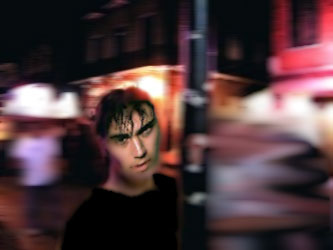It stands
to this day, a fading monolith, bereft of
all sense of time and mortality. A victim
of modernization and the telltale passing
of the years, what once was a grand home is
now merely a shell – compartmentalized,
austere.
In the grand old days of New Orleans the home
was a symbol of possibility, an emblem of
success worn proudly by the family who built
it: a family that had collectively risen from
poverty to become one of the most powerful
of the great mercantile families of the old
Port of New Orleans. The irony of this tale
is that it was this very fact – the
familiarity with poverty, the grasp at philanthropy
– that very possibly simultaneously
brought about the downfall of a dynasty and
the creation of one of New Orleans’
most enduring and grisly creatures of the
night.
Alberto De Leonne came to America from Santo
Domingo in the 1830’s with little more
than the clothes on his back. He had worked
his way throughout the Caribbean on tramp
steamers and merchant vessels, learning the
sea trade first hand. When he at last came
to the burgeoning port of New Orleans he set
about making a name and a fortune for himself.
De Leonne first acquired work as a clerk among
the merchants who jammed the docks along the
Mississippi River, his particular trade being
an interest in the export of sugar and cotton,
and the import of Caribbean foodstuffs, most
especially the sugary sweet limes of the French
and Dutch Antilles.
Soon De Leonne found a suitable home, near
the Esplanade end of Decatur Street, and not
long afterward, a suitable wife from among
the beautiful Quadroons, so prized by the
Creoles and the white aristocrats who hungered
after them. For De Leonne, this was an achievement
in itself. The beautiful Clothilde agreed
to become his bride; not only this, she came
with a dowry. But Clothilde brought an additional
burden in the form of her brother, Ramon,
a shady character that De Leonne did not much
care for. However, to appease his lovely bride,
De Leonne agreed to take Ramon in, giving
him charge of some minor responsibilities
in the household, and together they all moved
into De Leonne’s fabulous new home on
the Rue Bourbon.
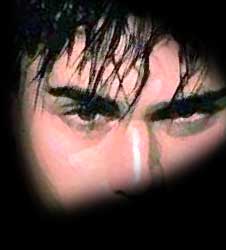
It was a huge structure, three stories high,
built in the Spanish style with long galleries
opening on a lush and tranquil central courtyard
that was the pride of the socially mobile
De Leonnes. Designed by the French landscape
artist and ornamental gardener Jacques-Felix
Lelièvre, the courtyard garden became
a haven for De Leonne and Clothilde who would
wile away long hours amid the tropic greenery,
listening to the birds that flocked there
in search of the many exotic fruits and seeds
scattered throughout the little oasis. A beautiful
conservatory stood adjacent to the garden
where De Leonne enjoyed his most unique flora
– Belizian orchids, poinsettias from
the Honduran coast, and, most prized of all,
a seemingly-immense Spanish lime tree whose
verdant leaves shown saffron in the sunlight
that warmed it’s fruit to ripeness.
De Leonne had sent especially for such a tree
from the exotic island of Cayo Dulzura off
the Cuban coast. Sailors had tended it on
its sea voyage and had gingerly carted it
from the Decatur docks upon its arrival at
New Orleans. Now it formed the centerpiece
of De Leonne’s beautiful garden, a symbol
not only of where he had come from, but how
high he had climbed to get where he now was.
So it was with some reluctance that De Leonne
gave in to Clothilde’s entreaties that
he place this beautiful landscape in the hands
of her brother, Ramon. De Leonne had not much
use for his new brother-in-law and did not
at all like his habits, least of all his fondness
for rum and for the company of “undesirables”
such as the swarthy dock workers and the superstitious
immigrants who ran at the mere mention of
the voodoo of the slaves. But eventually Clothilde
won him over and Ramon was given oversight
of the beautiful courtyard garden.
The arrival of children and the growth of
his business kept De Leonne preoccupied and
so it was that he perhaps did not notice the
slow slippage of his brother-in-law into the
unwholesome darkness of his negligent lifestyle.
Though he managed to maintain the garden at
the home on Rue Bourbon with almost obsessive
reliability, Ramon’s bad habits only
grew worse as time passed. Always an abuser
of drink, eventually Ramon began to pay to
many visits to the “Green Fairy”
and sadly became addicted to both absinthe
and laudanum, as well.
According to the legend, it was in one of
his drunken, drugged fits that Ramon had the
misfortune of coming upon members of a secret
vodoun sosyete involved in a black magic ritual
in one of the many festering alleys of the
Old Quarter. Many believe that this is when
Ramon – always weak and impressionable
– came to believe he had been cursed
by one of the vodusi men, whom, he later said,
looked up at him with opaque maroon eyes and,
holding up two fingers of his left hand, spat
a curse through nasty yellow teeth. Ramon
ran away in terror, but, as was later proved,
the damage was already done.
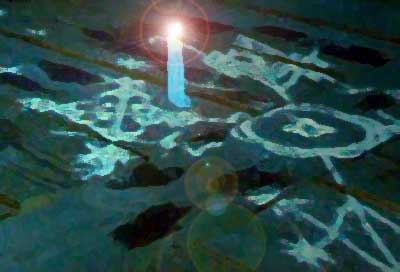
PsPrint.com offers Custom
Halloween Invitations for
your Vampire party.
Ramon began to neglect his regular duties.
Semi-nocturnal, he now began to sleep through
the day, waking at sunset to take his only
meal of the day. As the night hours wore on,
De Leonne and dear Clothilde could hear Ramon
working away in the garden and the conservatory – one responsibility he never let lapse.
When his work was done, Ramon would leave
the De Leonne house and prowl the streets
of the Old Quarter only to come home at dawn,
full of absinthe and running in terror from
what most believed to be “imagined” terrors.
This life, of course, could not persist for
long and sadly there came an evening when
no sounds could be heard from the darkening
shadows of the De Leonne garden. It was the
master of the house himself who found Ramon,
dead among the roots of the Spanish lime tree
that he had tended with such care. Touched
with pity, not least for his grieving wife,
De Leonne ordered that all respect be given
the body of his brother-in-law and that, because
he had never neglected his duties, that he
should sleep contentedly under the roots of
the lime tree where he had been found.
Imagine, then, the shock and horror of the
servants who had been charged with digging
Ramon’s grave when, among the twisted
roots and vines of the verdant tropical flora,
they began to uncover the decomposing remains
of human beings! Arms, legs, torsos, all came
forth in tangled masses of moldering flesh
and bones as the servants dug deeper; there
seemed to be no spot in the garden where there
was not the evidence and stench of decomposing
bodies.
De Leonne was appalled and it was quickly
obvious why Ramon had worked so diligently
and so responsibly at his garden duties. Even
more disturbing was the gruesome discovery
by police and mortuary workers that each of
the dead bodies had, apparently, been completely
drained of blood before being buried amid
the tropic flora and under the Cayo Dulzura
lime tree. With his household in an uproar
and his servants and slaves ready to riot
in fear of what they were calling “the
devil” and “the bloodsucker,” De Leonne ordered that Ramon be placed in
the family burial plot in St. Louis No. 1,
at least until the furor had died down and
the proper authorities had made sense of the
mess. One thing he did not need, after all,
was yet another decomposing body in his beloved
garden!
In the weeks following Ramon’s death,
after the last of the mortuary wagons had
hauled away the pitiful remnants of the dead
from the once-pristine home, a semblance of
peace came over the De Leonne house. Though
Clothilde continued to grieve, the reality
of her brother’s crimes, made somewhat
easier to bear when his addiction was taken
into account, grew less of a burden for the
De Leonne family. For the servants, however,
it was another story.
Amid furtive talk and whisperings, the servants
and the slaves seemed uneasy and went about
their chores with an abundance of caution
and fear. Something had caused many of them
to fall ill recently and two had passed away
in a short time. This fear was perhaps most
obvious in the servant whom De Leonne had
charged with Ramon’s old duties in caring
for the magnificent garden: he worked quickly,
if at all, and only in the light of the sun.
He and other servants would absolutely refuse
to go into the garden at night, and slaves
would have to be beat into going.
When at last this obstinacy became too much
to bear, Alberto De Leonne decided it was
time that he investigate just what was at
the root of his servants’ fears. He
took them each aside and inquired about the
source of their fear and loathing: each of
them told the same tale, that they feared
Ramon was not really dead and that he had,
in fact, returned to his old home to prey
upon – and even kill – everyone
who had survived him. To De Leonne this was,
of course, impossible, the absurd ramblings
of the foolish and uneducated. But he decided,
after the manner of men of science of his
time, to conduct an experiment and put the
foolish theory to the test: he himself would
spend the night, alone, in his garden, to
see whether there was any truth to the silly
tales.
So it was that the master of the house on
Rue Bourbon set up a small encampment in the
doorway of the conservatory with some items
for his comfort, several books and a good
lantern to last through the night hours. Neither
Clothilde nor the entreaties of his eldest
son and daughters could dissuade the man from
his intended vigil and so he was left to it.
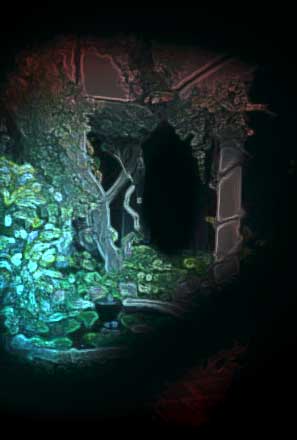
The night was cool, one of those Indian Summer
evenings so prevalent in New Orleans during
the heady days of September and October, and
De Leonne wrapped himself against the chill
as the night hours passed. It was nearly midnight
when, according to legend, De Leonne first
became aware that he might no longer be alone.
Peering out past the lamp’s feeble glow,
he was certain that he could discern a shadow
moving among the banana trees and the twining
jasmine that choked the brick walls all around
him. Soon, the sound of snuffling and scraping
could be heard coming from the darkness of
the conservatory behind him. Brazenly, he
took the lantern and stepped into the humid
darkness of the conservatory greenhouse, straining
to see through the orchids and bromeliads,
the date palms and thick aloe and, ultimately,
into the impenetrable darkness under the spreading
limbs of the prized Spanish lime tree.
There, it seemed, something was not right
and as he approached, De Leonne became aware
that the ground among the sinewy grey roots
was not still. In fact, it was roiling, moving
slowly in tiny heaps: something was crawling
in the rich, dark soil!
Undeterred, De Leonne leaned even closer and
held up the lantern for a better look. Immediately
he recoiled in terror, realizing, too late,
just what he was seeing. There, in the darkness,
was none other than his late brother-in-law,
Ramon, writhing like a red-eyed snake in the
black, grainy soil amid the fallen leaves
and shriveled fruit of the lime tree. But
before he had the thought to run, Ramon was
free of his loamy bed and was upon him, with
claws slashing and gnashing teeth sinking
deep into the terrified man’s throat.
As his life’s blood drained from his
body, De Leonne was able to pull from his
vest a revolver that he had placed there as
an amused afterthought. Now, it might save
his very soul. He fired once and the sound
startled the ghoul from him, but only momentarily.
When it became clear that the gun posed no
danger to him, the red-eyed fiend, swollen
like a huge, brown bladder, fixed itself yet
again to its prey. It was only at the sound
of running feet and the approach of other
members of the household that the awful creature
relinquished his hold on poor De Leonne, retreating
instead to the putrid darkness under the lime
tree branches.
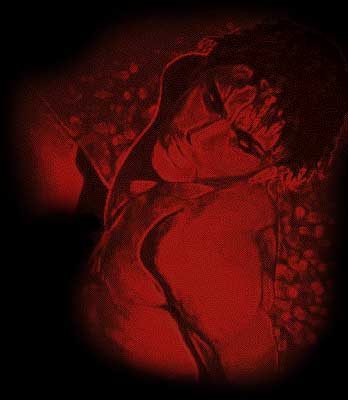
It was De Leonne’s oldest son, Charles,
who first came upon his father that night,
finding his lifeless body near the conservatory
door. As he gingerly entered the engulfing
darkness of the greenhouse, followed closely
by only the bravest of the male servants,
Charles became aware that he was being watched:
a pair of evil red eyes regarded him from
the darkness of the lush tropical plants and
the spreading limbs of the Spanish lime tree.
“There he is!” said Charles, and
at that moment one brave black man, larger
than the others, and known only by the name
Sadugh, leapt forward and took hold of the
writhing ghoul.
Sadugh held fast to the vampire Ramon as the
others threw ropes and bound him fast. While
they held him down, Sadugh went in search
of a sharp object and came running back with
a sharp piece of iron, more like a huge iron
nail, that he had found in the farrier’s
shop nearby. He spoke in a heavy African dialect
while one of the other servants translated.
“He say turn him over!” came the
order, but the vampire was fighting fiercely.
The servants held on bravely, despite the
oozing of the blood from the swollen thing,
once a man, now in their grasp. Red eyes blazed
and teeth clacked together in furtive attempts
to catch a stray hand or arm. But Sadugh was
too powerful. He stood over the beast Ramon
and, using all his might, turned the horrid
thing over, face down against the earth.
Again he said something indecipherable to
the others. “He say, dig! Cover him
up while he holds him!” And with that,
they all began to dig feverishly with their
hands, even the thin, patrician Charles fell
to his knees and dug like a dog.
When the hole was deep enough around the writhing
vampire, Sadugh took the iron nail and plunged
it into the heart of the creature, pinning
him to the ground. There came a terrible wailing
and a horrible, uncanny “gobbling”
sound as the vampire literally deflated in
under the pressure of the stake. Soon, however,
dead Ramon’s movements became less violent,
and eventually there was no movement at all.
While the servants worked to cover the horrible,
bag-like being, Sadugh went in search of a
maul with which to hammer the stake home.
This accomplished, they gathered the body
of Alberto De Leonne and took him into the
house with all honor and respect to prepare
for yet another funeral.
And thus the sad and miserable Ramon, who
became a vampire when he fell under the Evil
Eye of a black bokor vodusi, and who plagued
his family first, like the vampires of old,
at last came to rest under the spreading limbs
of the tree with the fruit from the Island
of Sweetness.
Or, is he at rest?
Many New Orleanians familiar with this tale
will tell you in all earnestness that the
vampire Ramon, the first known vampire in
Old New Orleans, never really went to his
repose, and that in the courtyard of the old
house, now broken into anonymous apartments
and businesses, there is yet a rusty old blacksmith’s
stake in a remote and overgrown portion of
an old garden. There are those who have stood
close by when, on a dark night, or when the
drums of new age Voodoo rituals waft over
Bourbon Street, the furtive whisper of a voice
can be heard, filtering up through the rich
soil. “I am the Devil!” it says
and entreats those nearby, “Let me out!”
Visitors to the courtyard are warned against
disturbing the old stake in any way.
There are those who insist that the spirit
of the Vampire Ramon has never remained trapped
with his body and that on some nights when
the mist comes in heavy off the river, the
vampire rises in a misty form and moves among
the living in the Quarter: kept from their
blood, he preys upon their life’s energy
and the magnetic attraction of their very
souls.
And a grey stump that once was a beautiful
Spanish lime tree is all that remains of the
garden once so prized by Alberto De Leonne.
After the encounter with the vampire under
it’s dark limbs, Charles De Leonne ordered
it to be cut down and burned. But in remembrance
of his father, he personally placed a sinewy,
jade-leafed branch into Alberto’s coffin
before it was closed for the last time and
placed in a cool and moldy vault in the St.
Louis No. 1. And there it, and what is left
of the De Leonne legacy, remains.
